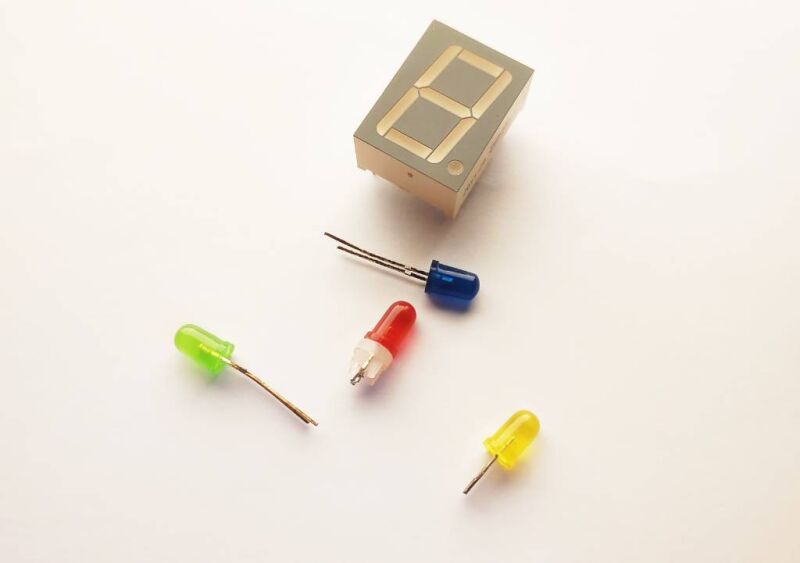light-emitting diode
An LED is a diode that emitts light when current flows through it. Similarly to regular diode, current can only flow from the positive terminal (anode) to the negative (cathode). The anode pin is usually longer than the cathode, and a flat edge can be seen on the LED's body, next to the cathode.
Symbol
Current limiting resistor
LEDs will let all the available current through, which can burn them out. Therefore a resistor have to be placed in series with the LED to limit the current flowing through it.
The resistor value can be calculated using Ohm's law, but this requires knowing the LED's voltage drop and operating current, which isn't usually possible when working with scavenged components. Therefore I generally use the table below as a reference, along with a current value of 20 mA.
| Color | Voltage Drop (V) |
|---|---|
| red | 2 |
| green | 2.1 |
| blue | 3.6 |
| white | 3.6 |
| yellow | 2.1 |
| orange | 2.2 |
| amber | 2.1 |
| infrared | 1.7 |
| other | 2 |
Reference
- LED resistance calculator from All About Circuits
